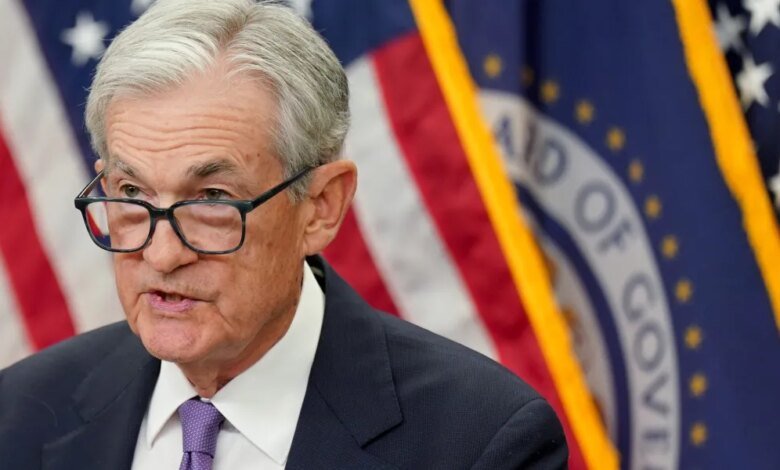Powell says that, unlike the dot-com boom, AI spending isn’t a bubble: ‘I won’t go into particular names, but they actually have earnings’

“I’m not going to get into specific names, but they actually have earnings,” Powell told reporters after the Fed’s policy meeting.
“These companies… actually have business models and profits and that kind of thing. So it’s really different” from the dot-com bubble, he added.
These comments represent what appears to be Powell’s most direct acknowledgment yet that building AI companies — spanning hundreds of billions of dollars in investments in data centers and semiconductors — has become a real engine of growth in the United States.
A productive play and not rate sensitive
Powell stressed that the rise in spending on artificial intelligence is not driven by monetary policy, or cheap money.
“I don’t think interest rates are an important part of the AI or data center story,” he said. “It is based on long-term assessments that this is an area where there will be a lot of investment, and this will drive productivity.”
This observation flies in the face of a market narrative that says easing financial conditions could fuel an asset bubble in technology. Instead, Powell suggested that building AI is more structural: betting on long-term business transformation. From Nvidia on track for half a trillion dollars in revenue, to multi-hundred billion dollar capital spending plans from Microsoft and Alphabet, this scale is unprecedented. But, according to Powell’s account, this is also baseless.
Goldman Sachs agrees. In a research note entitled “The AI spending boom is not very big.” Chief US economist Joseph Briggs said: “The expected investment levels are sustainable, although the ultimate winners in artificial intelligence remain less clear.”
Briggs and his team estimate that the productivity unlocked by AI could be worth as much as $8 trillion in current value to the US economy, and perhaps as much as $19 trillion in advanced scenarios.
“We are not concerned about the overall amount of investment in AI,” the Goldman team wrote. “AI investment as a share of US GDP is smaller today (<1%) than in previous big technology cycles (2%-5%).” In other words, there is still plenty of room to run.
Powell’s framing reflects this view: the AI race, although sometimes boring, is mainly financed by corporate cash flow rather than speculative debt.
Real economic impact
Powell noted that the wave of investment is appearing in the real economy. “It’s the investment we get in the equipment and all those things that go into setting up the data centers and feeding the AI,” he said. “It’s obviously one of the big sources of growth in the economy.”
These statements are consistent with private sector estimates. Economists at JP Morgan forecast that AI-related infrastructure spending could add up to 0.2 percentage point to US GDP growth over the next year, the same annual boost that shale oil drilling achieved at its peak.
The boom has already pushed demand for industrial energy to record levels and forced utilities to rapidly expand the grid, in the face of the realities of a very weak grid. The AI boom isn’t just being reflected on paper, in other words: Powell is talking about cranes, concrete, and capital goods.
Not without caution
However, Powell did not give AI a free pass. He stressed that although the current increase in investment appears healthy, it is too early to call it a permanent productivity revolution.
“I don’t know how these investments will go,” he said.
For all its promise, the AI economy is unevenly distributed: capital-intensive and concentrated among a handful of companies. Economists warn that productivity gains from AI will take years to trickle down to the broader workforce, and that automation may suppress employment in sectors that are now driving demand.
Powell acknowledged this when he noted that many of the recent layoff announcements from major companies “are about artificial intelligence and what it can do.” There is a paradox, as the same technology that boosts production may also slow job creation – one of the central bank’s two tasks.
Job growth, adjusted for statistical overcounting, is now “very close to zero,” Powell said. Powell says that, unlike the dot-com boom, AI spending is not a bubble: “I won’t talk about specific names, but they are actually making money.”
2025-10-29 21:04:00




